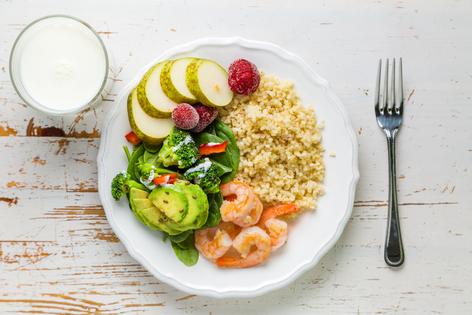Environmental Nutrition: 8 tips to master portion control
From restaurants to packaged foods to home cooking, portion sizes have ballooned in past decades. Many health experts link the rise in obesity rates with our tendency towards portion distortion -- a mismatch between our portion sizes and energy needs. Research by the University of Cambridge found that less availability of super-sized portions alone could reduce Americans' caloric intake by 29 percent.
"Instead of focusing on complicated diets and deprivation, simply eating less through better portion control is one of the best strategies people can take towards dropping pounds," says Lisa R. Young, Ph.D., R.D., adjunct nutrition professor at New York University and author of "The Portion Teller Plan."
The portions we eat are strongly influenced by our environment. So, make these tweaks to your eating habits to reclaim portion control.
1. Pay attention.
Thumbing through your smartphone or watching your favorite TV show while noshing is not the innocent habit you think it is. A 2017 study in the Journal of the Academy of Nutrition and Dietetics found that adults who never watch TV or videos during meals were 37 percent less likely to be obese than their peers who always ate in front of a screen. "Anytime your eyes and brain are distracted when food is sitting in front of you, you're more likely to munch mindlessly and eat more than you need," says Young.
2. Keep your distance.
At your next meal, try this suggestion from Cornell University: Keep serving dishes away from the dining table. The scientists found that women and men ate on average 20 percent and 29 percent fewer calories, respectively, when food was served from the countertop rather than from their table. It's a case of "out of sight, out of mind."
3. Downsize your dinnerware.
The size of plates, bowls and glasses in American households has increased over the decades, which is a problem for waistlines, considering we eat 92 percent of the food we serve up. People served themselves 77 percent more pasta when provided larger bowls compared to using a medium-sized bowl, per a study in the Journal of Nutrition Education and Behavior. Outfit your kitchen with smaller plates (8- or 9-inch instead of the typical 10- to 12-inch size), bowls, and drinking vessels to make small portions seem more substantial.
...continued







